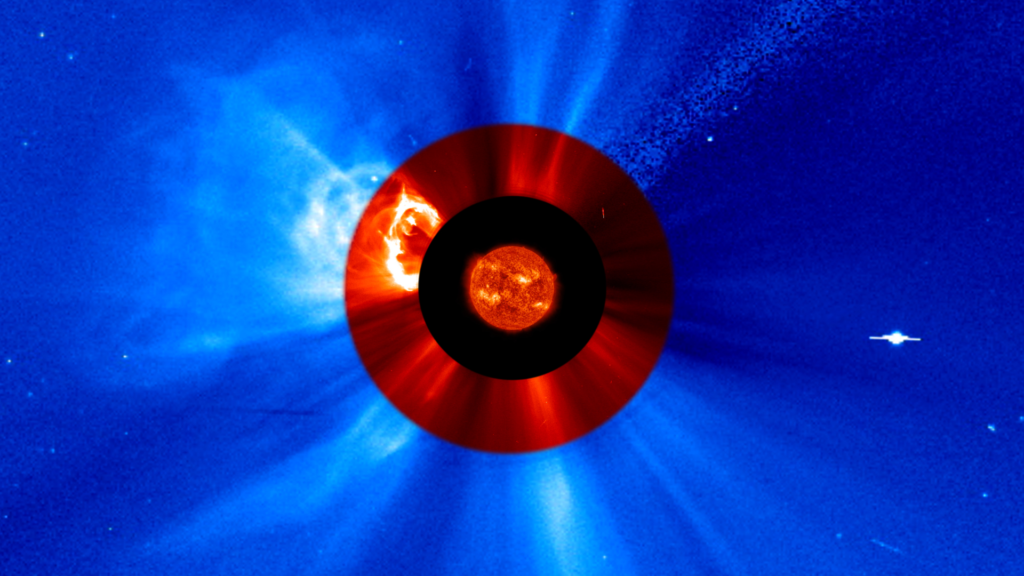astronomy
NASA’s JEDI Instrument: Shedding Light on Solar Eruptions
NASA’s JEDI instrument aims to study solar eruptions, providing valuable insights into space weather and improving satellite and human safety.
NASA is set to embark on an exciting new mission of studying the Sun and understanding its massive solar eruptions. With the selection of the Joint EUV coronal Diagnostic Investigation (JEDI) instrument by NASA, scientists will have access to groundbreaking observations in extreme ultraviolet light. The collaboration with the European Space Agency’s Vigil space weather mission, scheduled for launch in 2031, aims to provide an unprecedented perspective on the Sun’s activity and its impact on Earth’s space weather.

Unlocking the Mysteries of Solar Eruptions:
JEDI’s primary objective is to capture images of the Sun’s corona, the middle layer of its atmosphere. This region plays a vital role in the creation of the solar wind and the eruptions that cause space weather phenomena. By observing the corona using extreme ultraviolet light, JEDI will reveal the underlying mechanisms behind these eruptions, helping scientists understand the Sun’s drivers of space weather and inform improved warnings.
An Illuminating Perspective:
The Vigil space mission will be positioned at Sun-Earth Lagrange point 5, a stable point about 60 degrees behind Earth in its orbit. This unique vantage point will provide researchers and forecasters with an unprecedented, constant view of the Sun in extreme ultraviolet light. JEDI’s integration into the Vigil mission marks the first instrument to enable such observations from this perspective. This new angle will unlock a trove of invaluable data that will revolutionize our understanding of the Sun and its impact on our planet.
Enhancing Space Weather Monitoring:
Our dependence on satellites for communication, navigation, and weather forecasting makes it crucial to accurately predict and mitigate the effects of space weather. JEDI’s role in monitoring the Sun’s activity will be complementary to the Vigil mission’s space weather monitoring capabilities. Together, these technologies will provide a comprehensive understanding of the Sun’s behavior, enabling improved warnings for potential disruptions to satellites, spacecraft, and astronauts in space, as well as to technological systems on Earth.
Leadership and Funding:
The JEDI project is led by Don Hassler at the Southwest Research Institute in Boulder, Colorado. It is funded by the NASA Heliophysics Space Weather Program, with a budget not exceeding $45 million. The project’s management will be overseen by the Living With a Star Program of the Explorers & Heliophysics Projects Division at NASA’s Goddard Space Flight Center in Greenbelt, Maryland.
NASA’s selection of the JEDI instrument for integration into the ESA’s Vigil space weather mission promises to revolutionize our understanding of the Sun and its role in space weather. By capturing images of the Sun’s corona in extreme ultraviolet light, JEDI will unlock scientific breakthroughs, linking the Sun’s surface features with its atmosphere. This unprecedented level of observation will enhance our ability to predict and mitigate space weather effects, safeguarding our technological systems in space and on Earth. The collaboration between NASA and the European Space Agency sets the stage for significant advancements in heliophysics research and space weather forecasting.
For the latest updates on NASA’s groundbreaking heliophysics missions, be sure to visit:
https://science.nasa.gov/heliophysics
About NASA?
NASA, the National Aeronautics and Space Administration, is an independent agency of the U.S. federal government. It is responsible for the civil space program, aeronautics research, and space research. Established in 1958, NASA took over from the National Advisory Committee for Aeronautics (NACA) with the aim of giving the U.S. space development effort a distinct civilian focus, emphasizing peaceful applications in space science. Since then, NASA has been at the forefront of America’s space exploration programs, leading projects like Project Mercury, Project Gemini, the Apollo Moon landing missions from 1968 to 1972, the Skylab space station, and the Space Shuttle. Currently, NASA supports the International Space Station (ISS) and the Commercial Crew Program, while also overseeing the development of the Orion spacecraft and the Space Launch System for the lunar Artemis program.
NASA’s science division is focused on several key areas: understanding Earth through the Earth Observing System, advancing heliophysics through the efforts of the Science Mission Directorate’s Heliophysics Research Program, exploring bodies throughout the Solar System with advanced robotic spacecraft such as New Horizons and planetary rovers such as Perseverance, and researching astrophysics topics, such as the Big Bang, through the James Webb Space Telescope, the Great Observatories and associated programs. The Launch Services Program oversees launch operations for its uncrewed launches. https://www.nasa.gov/